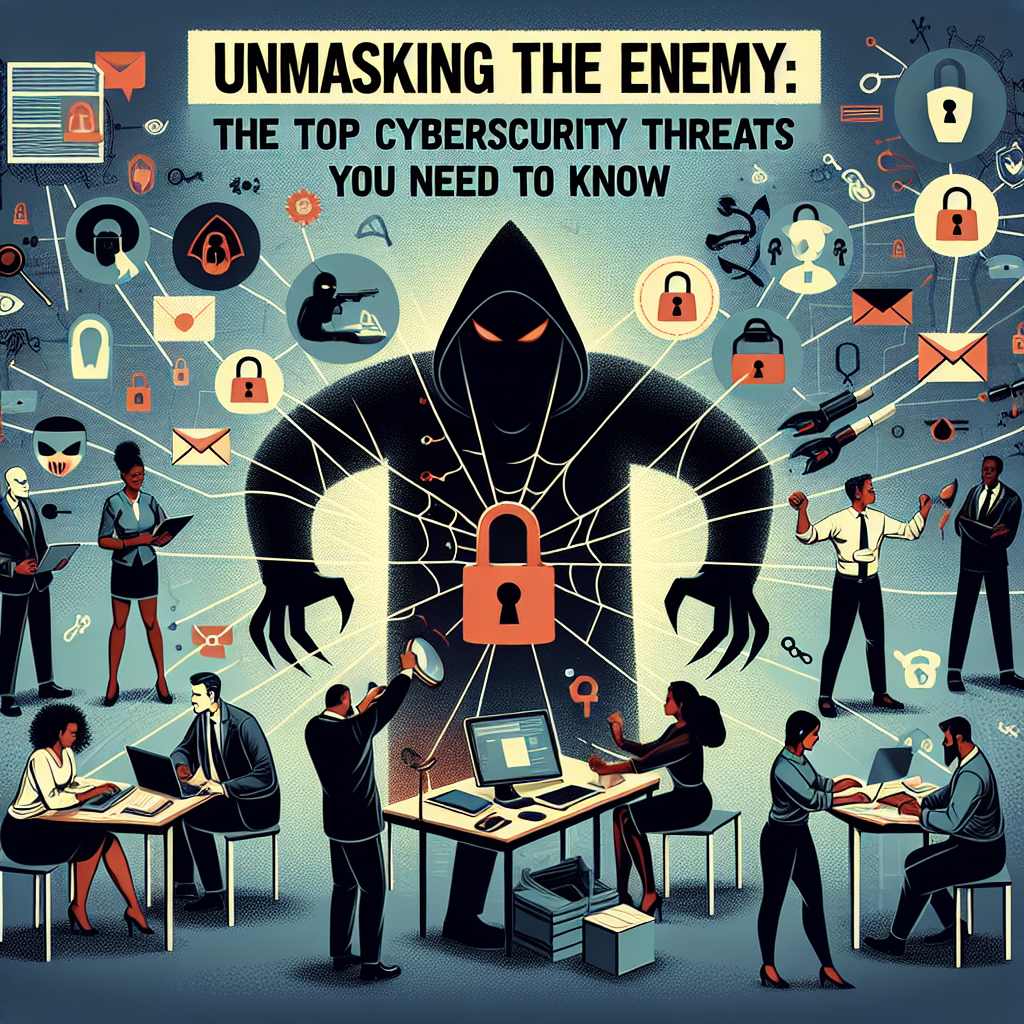In the digital age, cybersecurity has become a critical concern for individuals and organizations alike. As technology continues to advance, so do the tactics of cybercriminals. This article aims to provide an in-depth look at the top cybersecurity threats that users need to be aware of in today’s increasingly interconnected world.
1. Ransomware
What is Ransomware?
Ransomware is a type of malicious software that encrypts files on a victim’s system, rendering them inaccessible. The attacker then demands a ransom, usually in cryptocurrency, for the decryption key.
Notable Incidents
- WannaCry: In May 2017, WannaCry affected over 200,000 computers across 150 countries, crippling businesses and essential services like healthcare.
- Colonial Pipeline: In 2021, a ransomware attack led to the shutdown of a major fuel pipeline in the U.S., causing widespread fuel shortages.
Prevention Measures
- Regularly back up data and ensure backups are offline.
- Employ advanced endpoint protection and intrusion detection systems.
- Conduct employee training to recognize phishing attempts.
2. Phishing Attacks
Understanding Phishing
Phishing is a technique used by attackers to deceive individuals into providing sensitive information, such as login credentials or financial information, often through seemingly legitimate emails or websites.
Types of Phishing
- Spear Phishing: Targeted attacks aimed at specific individuals or organizations.
- Whaling: Phishing attacks directed at high-profile targets like executives.
Defense Strategies
- Use email filtering technologies to block suspicious messages.
- Educate users on identifying phishing attempts and the importance of verifying email sources.
- Implement multi-factor authentication (MFA) for added security.
3. Malware
Components of Malware
Malware encompasses various forms of malicious software, including viruses, worms, spyware, and adware. It can compromise systems, steal data, or disrupt operations.
Common Distribution Methods
- Downloading infected software from unsecured websites.
- Opening attachments from unknown senders.
Protection Techniques
- Install reputable antivirus software and keep it updated.
- Regularly update operating systems and software to patch vulnerabilities.
- Use firewalls to monitor and control incoming and outgoing network traffic.
4. Insider Threats
Defining Insider Threats
Insider threats arise from individuals within an organization who misuse their access to confidential information for malicious purposes, either intentionally or unintentionally.
Types of Insider Threats
- Malicious insiders: Employees who exploit their access for personal gain, such as theft of data or sabotage.
- Negligent insiders: Employees who inadvertently expose the organization to risk through careless actions.
Mitigation Strategies
- Implement role-based access controls to limit data exposure.
- Conduct thorough background checks during the hiring process.
- Foster a culture of security awareness through regular training.
5. Distributed Denial of Service (DDoS) Attacks
What is a DDoS Attack?
DDoS attacks flood a targeted server or network with excessive traffic, overwhelming it and causing legitimate requests to be denied. This can lead to significant service outages.
Impact on Organizations
DDoS attacks can cause financial losses, damage reputation, and draw resources away from essential operations to mitigate the attack.
DDoS Defense Tactics
- Utilize DDoS protection services that can filter traffic.
- Ensure redundancy in network infrastructure to manage excess load.
- Regularly update incident response plans to include DDoS scenarios.
6. Zero-Day Exploits
Understanding Zero-Day Exploits
Zero-day exploits target previously unknown vulnerabilities in software or hardware. These vulnerabilities are called "zero-day" because developers have had zero days to fix them since they’re made public.
The Risk Factor
Organizations are at high risk when such vulnerabilities are discovered. Cybercriminals exploit them before patches are available, leading to severe consequences.
Prevention and Response
- Regularly update and patch software when vulnerabilities are identified.
- Employ intrusion detection and prevention systems that can identify anomalous behavior.
- Engage in threat intelligence sharing to stay informed about potential zero-day vulnerabilities.
7. Credential Theft
What is Credential Theft?
Credential theft involves the unauthorized acquisition of usernames, passwords, and other login information. Attackers can use stolen credentials to gain unauthorized access to systems.
Common Techniques
- Keyloggers: Malware that records keystrokes.
- Credential stuffing: Using stolen credentials from one breach to access multiple accounts.
Defense Strategies
- Use password managers to create and store complex passwords.
- Implement MFA to add an additional security layer.
- Monitor accounts for unusual activity or unauthorized access attempts.
Conclusion
The realm of cybersecurity is ever-evolving, with new threats emerging regularly. Awareness and education about these threats can empower individuals and organizations to take proactive steps in mitigating risks. Regularly updating security measures, investing in technology, and fostering a culture of cybersecurity are crucial in defending against adversaries in the digital landscape. By understanding these top cybersecurity threats, users can better prepare themselves to navigate the complexities of the digital world securely.





